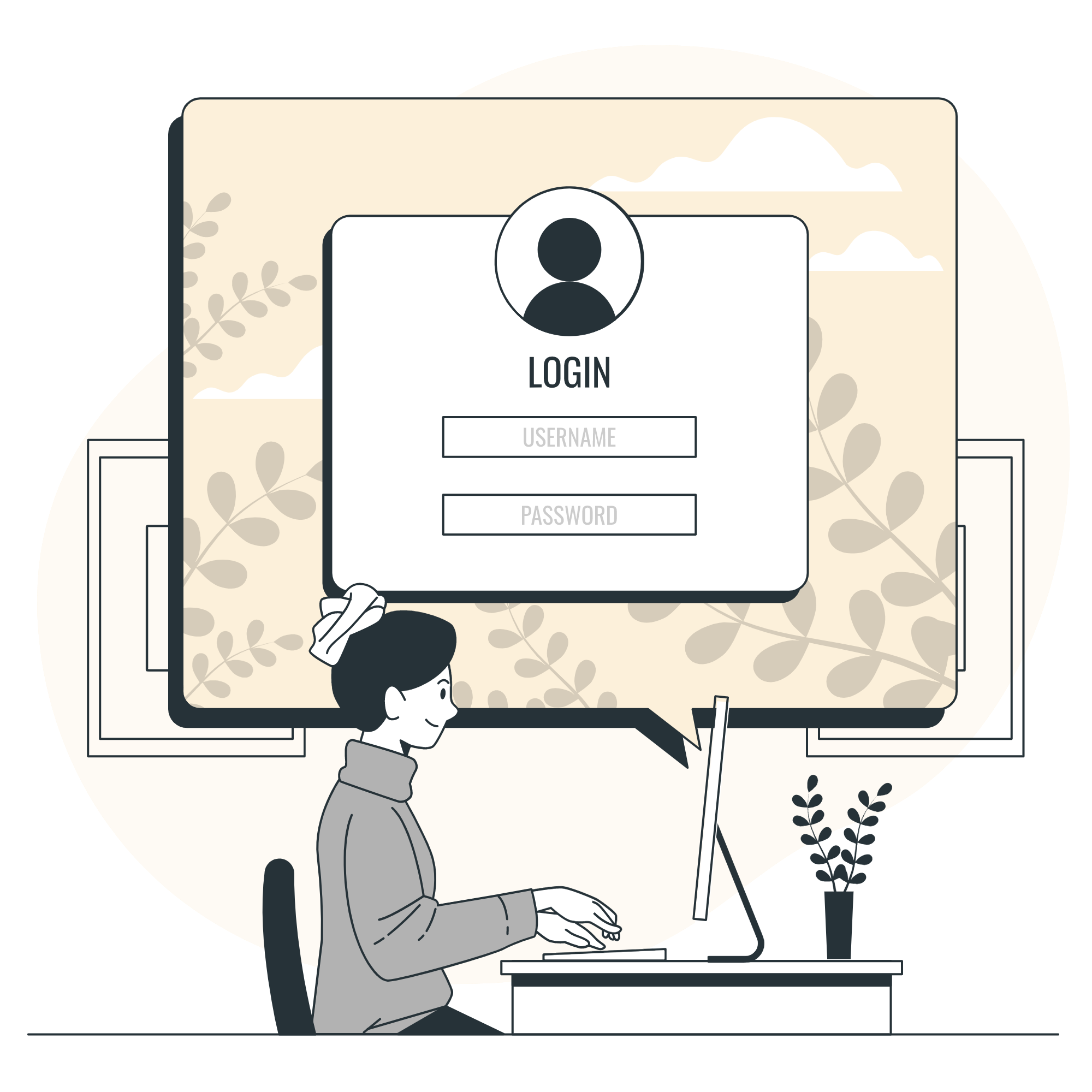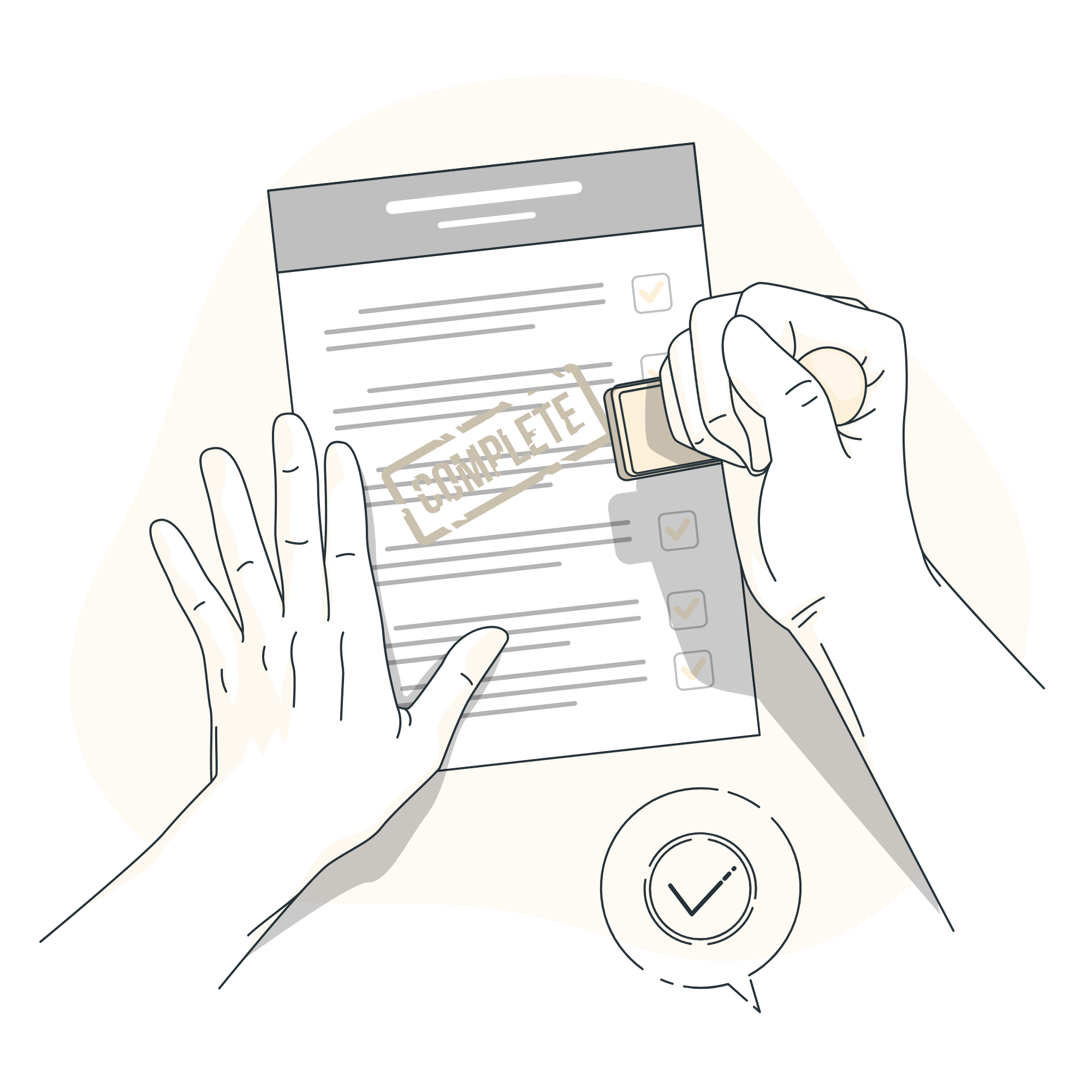CIMA Certificate: Beginner’s guide to the Certificate level exams in 2025

So, you want to become a CIMA qualified accountant? Well, if you don’t have an accounting background the first step on this journey is gaining the CIMA Certificate in Business Accounting!
Passing your CIMA Certificate exams will be your key into the Professional CIMA Levels – from Operational moving all the way up to Strategic!
This page will tell you everything you need to know before taking this first crucial step in your CIMA journey by answering all the commonly asked questions. Whether it’s when you should take the exams or what’s included in the syllabus, we’ve got it covered!
1. What is the CIMA certificate?
2. Do I need to take CIMA certificate?
3. CIMA certificate exams
4. How, where and when?
5. Exam format
6. CIMA certificate pass mark
7. Order of the CIMA certificate exams
8. How difficult are the exams?
9. How long does it take?
10. Do I need a course provider?
11. How to pass first time
Join Our 100% FREE Courses!
| Access our free CIMA certificate courses and don’t pay a thing for your certificate level studies! |
1. What is the CIMA certificate?
1. What is the CIMA certificate?
The CIMA Certificate in Business Accounting (but more commonly known as simply ‘The CIMA Certificate’) is a qualification that gives you a basic grounding in types accounting and business. To gain this qualification, you have to pass 4 exams, each focusing on a different aspect of business and accounting. The exams are:
CIMA BA1 – Fundamentals of Business Economics
CIMA BA2 – Fundamentals of Management Accounting
CIMA BA3 – Fundamentals of Financial Accounting
CIMA BA4 – Fundamentals of Ethics, Corporate Governance and Business Law
2. Do I have to take the CIMA Certificate exams?
Before you start thinking too much about taking the CIMA Certificate exams, you should check to see if you’re eligible for CIMA exemptions! If you already hold accounting or business qualifications, there’s a chance that you may be able to skip some or all of the CIMA Certificate exams. This is because CIMA offers exemptions to those who have already demonstrated that they have the requisite knowledge for each exam. This means that you may be able to start your CIMA journey at the Professional Level.
If you think you are eligible for a CIMA exemption, it is ESSENTIAL that you apply for it before taking any CIMA Certificate exams. If you take an exam and fail it, you’ll have to resit, even if you were originally eligible for an exemption!
If you’re still unsure about how this all works, you can read more in our complete guide to CIMA exemptions.
It’s also worth noting that this year you can now start the CIMA FLP foundational, which allows you to start your CIMA studies via mini-online assessments instead of sitting your certificate exams at all!

3. Everything you need to know about CIMA certificate exams
What will I be examined on?
All the topics that you’ll need to know for your CIMA Certificate level exams can be found in CIMA’s syllabus. For a more detailed look at the CIMA syllabus, you should check out our own guide to the CIMA syllabus.
As noted above, the CIMA Certificate level is broken down into four exams:
You will gain an understanding of the areas of economic activity relevant to an organisation’s decisions and, within this context, the numerical techniques to support such decisions.
Subjects in CIMA BA1:
25% = Macroeconomic and institutional context of business
30% = Macroeconomic and organisational context of business
20% = Informational context of business
25% = Financial context of business
Subjects in CIMA BA2:
10% = The context of management accounting
25% = Costing
30% = Planning and control
35% = Decision making
These statements are prepared within a conceptual and regulatory framework requiring an understanding of the role of legislation and of accounting standards. The need to understand and apply necessary controls for accounting systems, and the nature of errors is also covered. There is an introduction to measuring financial performance with the calculation of basic ratios.
Subjects in CIMA BA3:
10% = Accounting principles, concepts and regulations
50% = Recording accounting transactions
30% = Preparation of accounts for single entities
10% = Analysis of financial statements
Subjects in CIMA BA4:
30% = Business ethics and ethical conflict
45% = Corporate governance, controls and corporate social responsibility
15% = General principles of the legal system, contracts and employment law
10% = Company administration
4. How, where and when?
The first thing you’ll need to do is sign up to get a CIMA account. Once you’ve enrolled with CIMA (and paid CIMA’s registration fee of £99), you’ll be able to book a date for your first CIMA Certificate level exam on your ‘My CIMA’ account.
CIMA Certificate in Business Accounting exams are facilitated by Pearson Vue (if you’re in the UK, you may have already encountered Pearson Vue when taking your driving theory test!). You can choose to take CIMA Certificate exams either on a computer at a Pearson Vue centre or from your home on your own computer. Whilst taking the exam at home may seem like the most convenient option, there are some important things you must bear in mind:

If you take your exam from home, you won’t be able to handwrite calculations or notes during the exam. If you do want to make notes, you’ll have to use the on-screen scratch-pad (more on this later on!)
If your internet connection is unreliable, this may cause problems when you come to sit the exam – you’re sure to have many thoughts going through your mind before your exam, but your internet connection really shouldn’t be one!
Before the exam, you must download the software Pearson Vue uses to facilitate and invigilate your exam. This software requires access to your webcam and microphone (so they can ensure you’re not cheating!), so they both must be in working order.
You must ensure that you can be in a room alone, without any noise distractions. If someone else is caught in the room with you, you will be DISQUALIFIED and at risk of being barred from CIMA membership.
Therefore, if you’re worried about any of these things, you should consider taking your exams in a Pearson Vue centre where the responsibility is left to them.
So, when can you take the exams? You can book an exam for a time and date of your choosing (subject to availability at Pearson Vue). There is no set ‘sitting period’ for CIMA Certificate in Business Accounting exams, so the choice is up to you. You do not need to book all 4 exams in one go (we strongly advise you to book one exam at a time), and you can take the exams in any order you like – but more on this later!
As of March 2024, it costs £117 to sit a CIMA Certificate level exam if you are taking it from Western Europe, Australia, Singapore, the USA and Canada, but CIMA offers reduced fees for the rest of the world to improve access to their qualifications.
5. CIMA certificate exam format
All CIMA Certificate exams are two hours long. In your CIMA BA1, BA2 and BA3 exams you’ll have to answer 60 questions, whilst in BA4, you’ll have to answer 85 (more because the questions are typically shorter). The exam questions will vary in style. You may encounter any of:
- Multiple-choice – You must pick 1 answer from a list of responses.
- Multiple-response – Similar to multiple-choice, but this time you have to pick 2 or more correct answers from a list. Usually (but not always!) the question will specify how many answers you need to select.
- Number entry – These typically involve you making calculations to give a numerical answer. Remember to answer to the correct number of decimal places!
- Hotspot – These questions ask you to mark the correct spot, which will typically be a point on a graph.
- Drag and drop – You’re required to drag answers into the correct order or place an answer with the correct definition.
In the exam, you’ll have access to several tools and functions to help you on your way! These are:
On-screen calculator
Thankfully, you won’t have to do calculations in your head as you’ll have access to an on-screen calculator (this isn’t a maths exam after all!). We recommend you bring in your own calculator as well because it makes any long calculations so much easier! You can find a list of CIMA approved calculators on their website.
Scratch-pad and notepad
If you’re taking the exam in a Pearson Vue centre, you’ll have access to a pen and whiteboard to perform your calculations, along with the on-screen ‘scratch-pad’ where you can also make notes. However, if you choose to take the exams at home, you will not be able to handwrite calculations due to security issues, but you will have the on-screen ‘scratch-pad’ at your disposal.
Tables & formula booklets
You’ll also be pleased to learn that you’re not required to remember all the tables and formulae for your CIMA Certificate Level exams – you’ll have access to on-screen table & formula booklets. You can access these by clicking on the ‘Tables & Formulae’ button in the bottom left-hand corner of the exam programme. You can find out which formulae and tables are provided on the CIMA website.
Flag for review
The flag for review feature allows you to mark any question in the exam that you wish to revisit. Once all questions in the exam have been viewed, you can then choose to only view those that you have flagged for review, making the process of revisiting these tough questions a little easier!
6. CIMA Certificate Pass Mark
Although you answer 60 (or 85) questions in your CIMA Certificate level exams, CIMA will give you a scaled score out of 150 – to pass you’ll need to achieve 100. Every student sitting the exam sees a different set of questions (taken from a large bank) so CIMA uses scaled scores to level the playing field for students and make the results fairer!
Immediately after you’ve finished your exam, you’ll receive a provisional pass or fail, which is printed out by the staff at the Pearson Vue centre or viewable on your Pearson Vue testing platform if taken remotely. Then, 48 hours later, you’ll receive your scaled score as well as what areas of the syllabus you were ‘proficient’ in. If you fail the exam, but you’re very close to passing (scoring in the 90s), we strongly recommend you retake the exam as soon as possible. If the knowledge is still fresh in your mind, and you’ve had a chance to revise the areas you were not deemed proficient in, you’ll have a much better chance of passing the second time around.

7. In which order should I take my CIMA Certificate exams?
CIMA has no rules on what order you need to sit your exams…so you are totally free to start with CIMA BA1 and take them sequentially to CIMA BA4 or any of the other 23 combinations of CIMA Certificate Level exams!
However, at Astranti we recommend taking the exams in the order:
CIMA BA2 – CIMA BA3 – CIMA BA1 – CIMA BA4
We advise starting your CIMA Certificate level studies with BA2 as the topics it covers lay a good foundation for the rest of the course. For example, once you’ve passed BA2, when you get round to studying CIMA BA3 you’ll be pleasantly surprised to learn that you’ve already learned some of the content for that exam. However, CIMA BA1 and BA4 have less crossover in the content they cover, so you may want to take them towards the end of your CIMA Certificate studies.
8. How difficult are the CIMA Certificate exams?
As with all exams, they’re only easy if you know the answers! However, depending on your skills, experience and amount of preparation time, you may find certain exams harder than others.
To gauge the difficulty of each exam, you may find it useful to consider the respective pass rates for each one: (You can find the most up to date CIMA pass rates on the CIMA website.)
Pass rate (as of November 2024)
CIMA BA1 – 72%
CIMA BA2 – 53%
CIMA BA3 – 73%
CIMA BA4 – 57%
If you’re totally new to accounting, you’ll probably find CIMA BA2 the toughest. This is because CIMA BA2 introduces topics such as costing and profit reconciliation, which can be difficult to get your head around if you’ve never studied accounting before.
CIMA BA1 is a bit of a mix of calculations and theory! Whilst it does require you to perform calculations, you’ll also be tested on your knowledge of government regulation of markets, so if you already have a good understanding of current affairs, you’ll have a head start!
CIMA BA3 is a lot easier if you’ve mastered BA2! BA3 is the natural sequel to BA2 due to the significant content overlap. Therefore, once you’ve passed BA2, we recommend taking BA3 soon afterwards whilst the knowledge is still fresh in your brain!
Don’t underestimate CIMA BA4. In BA4, you won’t be asked to perform any calculations – but don’t let that fool you into thinking that it will be an easy exam! This exam requires different skills, particularly focusing on understanding definitions and applying principles to various scenarios.
9. How long does it take to complete the CIMA Certificate level?
If you have the time to study and revise two or three chapters a week from the Astranti study text, you should be able to get to the required ability in the following times:
CIMA BA1 – 10
CIMA BA2 – 8
CIMA BA3 – 8
CIMA BA4 – 7

We strongly advise that you book a date to sit your exam early in your studies. This is for two reasons:
- Exam centres are sometimes fully booked for weeks (or sometimes months) in advance – you don’t want to learn all of the content and then find you have to wait weeks before you can sit the exam!
- Having a set date for your exam can give you a target to work towards, focussing your mind, and will help you fight against the temptation to procrastinate!
10. Do I need a course provider?
In short – yes!
Although the CIMA Certificate in Business Accounting is only the first step in your accounting journey, the topics are complex enough that you’d struggle to research all of the topics yourself. And really, why would you want to when there are excellent free courses (like Astranti’s) out there which will give you all you need to know to pass your exams?
When you sign up for a course provider, you should expect:

- Study texts – You’ll need a study text that covers the CIMA Certificate in Business Accounting syllabus and simplifies complex topics in a way that makes them easy to follow.
- Videos – After a long day working, you may prefer to study by watching a video. It’s always nice to listen to someone else explain a topic for you rather than having to read it all yourself!
- Revision notes – In the last couple of days, hours and minutes before your exam, you don’t want to be reading through the whole syllabus study text to refresh your memory! Revision notes are a great tool because they give you all of the key topics to focus on in an easy to follow format.
- Questions and mocks – The best way to prepare for the exams is by testing your knowledge. You should definitely go with a provider who provides questions and mocks to allow you to see which areas need improvement before your exam!
- Tutor support – Sometimes, you may encounter a topic that you really do not understand. Therefore, you’ll want a provider you can contact to clear up any queries you have.
If you want a good example of these resources, look no further than Astranti – we offer all of these for free!
11. How to ACE your certificate exam first time
Start studying early
You’ll need to cover the entire syllabus in your studying, so it is essential that you start your studies early. Don’t put off starting your revision until a few days before the exam. Be realistic about how long it will take you to learn the content and become comfortable answering questions.
Mocks
Mocks are the closest you’ll come to replicating ‘the real thing’, so it’s vital that you utilise the mocks at your disposal. Astranti offers 3 free mocks for every CIMA Certificate exam- we recommend you do them in the final two weeks of your studying once you’ve covered everything in the syllabus. You can analyse your mock results to highlight where you need to concentrate your revision in the build-up to your exam.
Know your formula sheet!
Walking into an exam and seeing the formula you spent hours trying to memorise, written on the formula sheet, is frustrating. But finding out the formula you assumed was given is in fact nowhere to be seen can be catastrophic! Not only is it likely to hinder you in answering specific questions, but the sheer panic could be enough to seriously impact your performance. It’s important to know exactly what is provided in your exam and, just as importantly, what isn’t. This will make the revision process more efficient and may also prevent any exam room panic.
Read the question!
This may sound obvious but carefully check for double negatives and other words such as ‘not’, ‘always’, ‘most’ and ‘best’ which will be important in making sure you select the right answer.
Take care with your time
One of the main areas where students fall down is running out of time and not answering all of the questions. You cannot afford to spend valuable time dwelling on a difficult question for too long as you may end up not having time to answer the questions you do know. You MUST utilise the flagging tool and move on to another question if you’re spending too long on one.
Useful videos

Holly Dymmock
Customer Service and Mentoring Supervisor
I hope you’ve found this guide on taking CIMA exams useful – but if you’ve got any further questions, leave a message and I’d be happy to help!
Comments
Illustration by Storyset.
